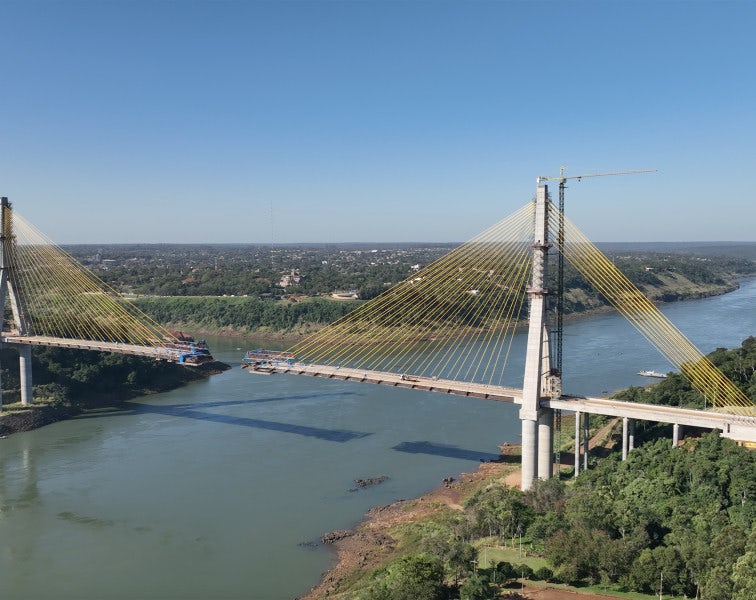Dampers for Stay Cables
Extending service life of your cables.
- Stay Cables
- Extradosed Cables
- Hangers
- +1
Slender supporting structures and long cable lengths make stay cables susceptible to vibrations. Big vibration amplitudes may result in damages to the cable due to bending and fatigue loads. This decreases a cable’s durability and may even endanger structural safety. Depending on the respective cable parameters, each cable is more or less prone to vibration. Longer cables are more likely to vibrate than short ones.
By experience, DYWIDAG recommends to increase a cable’s inherent damping by using additional damping devices for cable lengths above 80m. Running a project specific wind and vibration study helps to locate cables which may need additional damping.
Cables start vibrating when they are excited. Different excitation mechanisms are known and can be seen in this overview. Sufficient damping prevents cables from vibrating and with this mitigating excitation. DYWIDAG recommends damping values of at least 3–4% logarithmic decrement δ to be reached for the first two to three vibration modes depending on each cable’s boundary conditions and on project specific requirements. These damping values can usually not be achieved by inherent cable damping so that additional damping is the solution.
Different damping solutions are available and may be applicable for a cable in dependence from its configuration like cable length, cable mass, cable force etc.
External viscous damper: Provide very effective supplementary damping by direct connection of the cable to the superstructure via the damper itself.
Internal viscous damper: Transmission of forces from the damper through its steel housing and exit pipe into the recess pipe, from where they are transferred into the superstructure. Can be used at virtually any cable position.
Internal rubber damper: Usually most effective at short and medium cable lengths. Internal rubber pads acting on shear resistance are placed inside an outer envelope (exit pipe). Elastomeric high efficiency material dissipates vibration energy while deforming when subject to shear stress.
Internal friction damper: Effective solution for medium to long cable lengths. Internal rotational friction members placed inside an outer envelope (exit pipe) are dissipating energy coming from cable movement.
Options
Bending stopper to ensure damper activation but protect anchorage from excessive bending stresses
Cable vibration measurement and analysis
Verification of damper performance (short term or permanent monitoring system possible)
Our damping solutions all meet all fib & PTI requirement for damping performance



